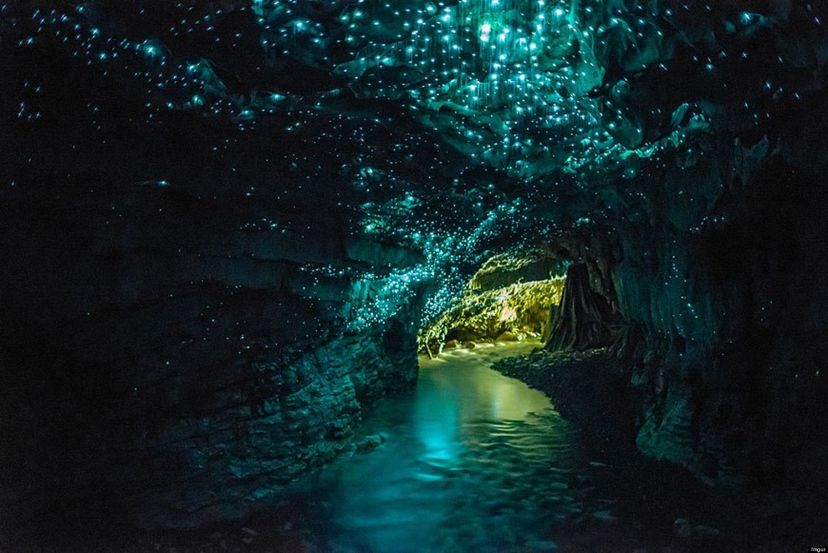
Caves are eerie and mysterious. The splendor of a cave is uniquely individual and each cave offers a story. Some caves are famous, while others are only now coming into discovery. Under the earth, separate eco systems covet vaulted chambers, underground rivers and sacred surprises. Adventurers can explore diverse caves with a dark history or witness glowworms lighting the chambers. One of the few places left to pioneer are the caves of the world; discoveries are abundant in current day explorations. Some of these caves will leave you in awe, majestic in their own way. Beneath our feet remains another world of intricate, hidden gems. No one really knows how many caves there are in the world, but the ones that are known call to even the most timid. If you have never visited a cave, the time is now. The amazing journey of caves begins here with our favorite 12 caves you have to visit.
Advertisement
12. Carlsbad Caverns -New Mexico, USA
Considered one of the most famous caves in the United States is Carlsbad Caverns. It is one of the oldest cave systems in the world. These legendary caves are located 27 miles from the city of Carlsbad in the Guadalupe Mountains of New Mexico. It is estimated that over 225 million years ago, Carlsbad Caverns was once a sea. Discovered by a little boy, Jim White, he would use his homemade wire ladder to explore the caverns. Take a guided or self-guided tour of the expansive caverns and enjoy the many chambers and rooms this cave has to offer. The appropriately named ‘Big Cave’ is the biggest cavern, with the some of the most colorful rock formations ever, while ‘Left Hand Tunnel’ will take you to amazing cave pools and fossils. Located deep within the Carlsbad Caverns is a mesmerizing place called the ‘King’s Palace’, a series of four chambers opening to a peculiar rippled rock formation known quaintly as the Queen’s Draperies. Carlsbad Caverns National Park entertains over 300,000 visitors a year. The reason Carlsbad is so famous? It hosts over 119 chambers of caves under the quiet of the desert terrain.
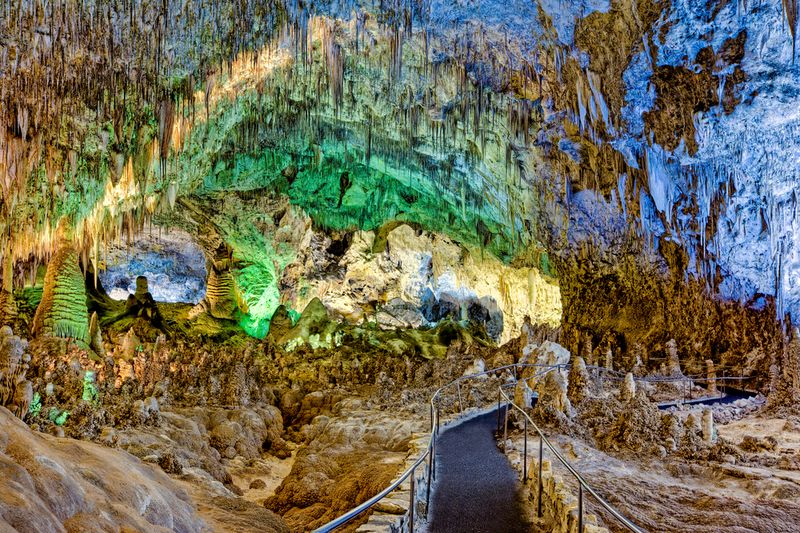
11. Puerto Princesa Underground River -Palawan, Philippines
Be first in line to view the world’s longest underground river and navigate through a fascinating blend of bat habitat and amazing geology in the Puerto Princesa caves. Take a short jungle walk and see the different species of animals along the way.Puerto-Princesa Subterranean River National Park has one of the most impressive cave systems, featuring intact old-growth forests, spectacular limestone landscapes, distinctive wildlife, and pristine beauty. It is located outside of the Philippine Archipelago on the coast of Palawan. The highlight of this river system is that it directly ends flowing into the sea. This mysterious cave site is a full ‘mountain-to-sea’ ecosystem, with a global phenomenon called tidal influence distinguishing these caves from any other famous caverns. Inside the caves, eye-catching rock formations create distinct forms like mushrooms, horses, a half face of Jesus, and fish. It is the first national park created and maintained by a local government unit, as a symbol of commitment by the Filipino people to hold onto their natural heritage. The Filipino people serve the park to keep it protected at all times. In 2012, this captivating underground river was officially established as one of the great new 7 wonders of nature.
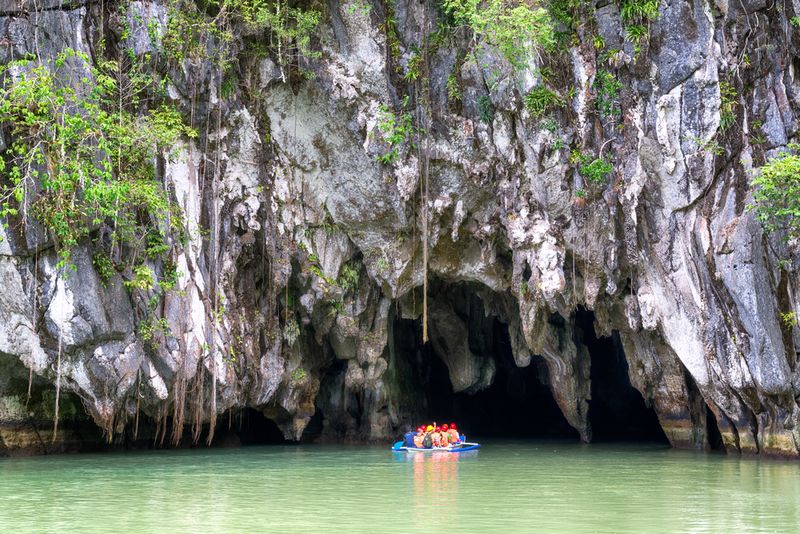
10. Blue Grotto Caves -Capri, Italy
The Blue Grotto Caves of Italy are an absolute must-see for any visitor. This cave is situated on the northwest corner of Capri Island and draws a surplus of interested crowds to its iridescent blue waters constantly. This is no surprise as the experience is best described as surreal. In ancient times, people believed the Blue Grotto held magical healing powers and would frequent the caves to prolong their youth. The mystical water color can be compared to a blue sapphire or topaz gem. As your boat enters the cave, you must lay down flat to be sure you make it through the low ceiling opening. The best time to visit the Blue Grotto caves is in the late afternoon when the sun will shine directly on the outside of the cave. The brilliant turquoise water presents many different splendid ocean views. Inside the main cave, there is another chamber called the blue cathedral which extends into many smaller chambers. Anything submerged underwater will take on a strange discoloration, almost making objects reflect a silver iridescence. This cave offers a feeling of zen and purity; it is easy to see why the ancient Romans used the grotto as a healing pool and fountain of youth.
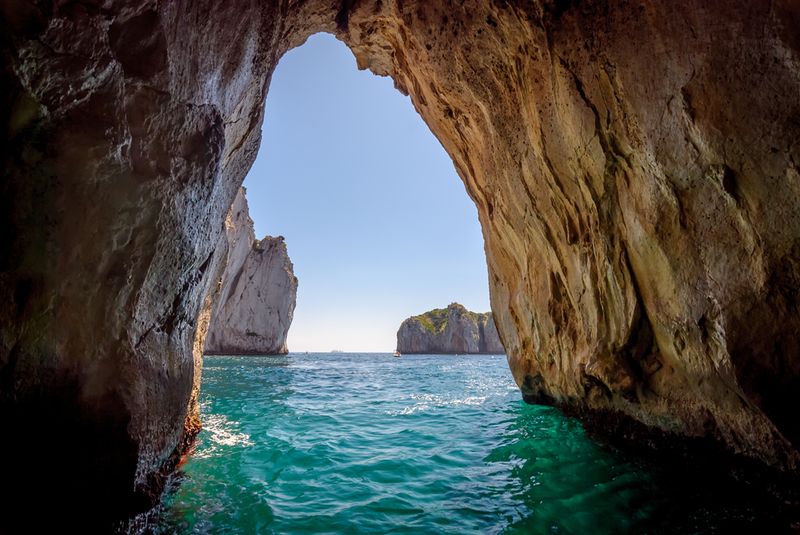
9. Škocjan Caves -Trieste, Slovenia
The Skocjan Caves look like something out of the “Lord of the Rings” movies with vast underground gorges and halls. They are a network of 11 caves with swallow holes and natural bridges. The Skocjan Caves Regional Park is located on the main Karst plateau about 15 km from Italy. Karst formation caves are very distinct to Slovenia, with few in the world like this it’s only here that you can marvel at the world’s largest underground wetlands. The Skocjan Caves are actually an underground canyon with a river carving the rocks along the way; the water noise is a bit fear-inducing when the guards shut off their lights. Early explorers only had a small flame to use to navigate through this enormous cave system. The old carved stairs used by the explorers still exist for an eye-opener to see just how hard it was for these brave pioneers. This massive environment is surrounded on the outside by an ecosystem rich in diversity of plant life and animals. There are thousands of other caves in this area to explore when you are finished in the daunting Skocjan Caves.

Advertisement
8. Barton Creek Cave -Belize
Outside of San Ignacio, Belize is an exciting remote cave once used by the ancient Mayans for ceremonial and burial purposes. Barton Creek cave visits involve spending an hour paddling canoes down an ancient Mayan waterway leading inside the mountain caverns. Meander along the route and you will get to see skulls and true artifacts as you move in between the stalactites and stalagmites. This cave offers high ceilings and cathedral chambers making it a beautiful setting in which to photograph. It is as if you were transformed into another time. The energy of the Mayan history is felt deeply in this underground cave; the remains of human sacrifices and pottery shards are an important link to the historic Mayan culture. On the way to the caves, which is about a 45 minute drive, you will pass through a traditional Mennonite village in Upper Barton Creek. Across the way is a clear, running creek abundant with native wildlife, such as howler monkeys. You will hear them, and maybe even see them as they rest in the deep mountain forests. This cave is uniquely historical and hidden deep in the rainforest jungle of Belize.
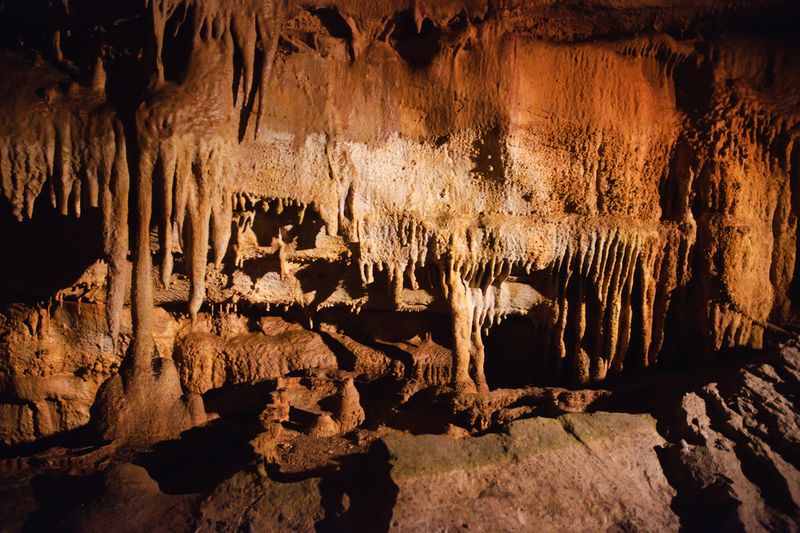
7. Onondaga Cave -Missouri, USA
Missouri is often referred to as “The Cave State” because it boasts over 6,000 cave formations within the state. Onondaga cave is one of the coolest caves in Missouri with its active flowstones, where water is busy building the formations. Stalagmites and dripping stalactites help make this cave a national natural landmark. The crevices which make up the Onondaga cave are the direct result of time laden, old river streams running constantly underground. Without realizing it, you are basically walking on water over roaring rivers invisible to the eye, covered by mounds of soil and rock beds. Karst is terrain based on soluble bedrock layers and is an integral part of many of Missouri’s caves. It is characterized by deep hollows, springs, sinkholes, eroded rolling hills and natural bridges. Missouri caves all are notably Karst. Karst was originally a name from Slovenia, typical for their own cave formations. The park itself offers beauty on the surface with Vilander Bluff Natural Area providing a panoramic scene of the Meramec River. The lovely Meramec River is formed by the many springs, both underground and above.
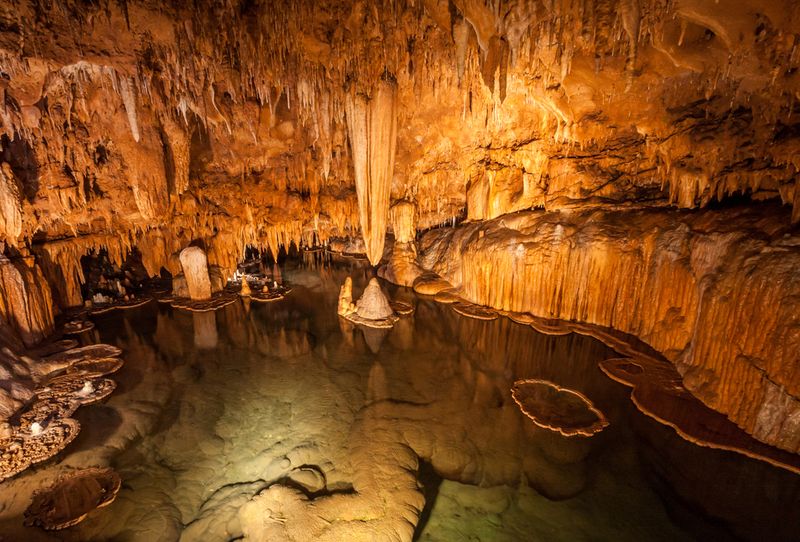
6. Fantastic Cave Pit -Georgia, USA
The largest cave in America is the Fantastic Cave Pit in Georgia. It has a mind-blowing depth of 586 feet. To give you an idea of just how huge this cave is, it can hold the Washington Monument, and is twice the height of the Statue of Liberty. Throw a stone and it takes 8 full seconds to reach the bottom. Fantastic is known as one of the two Ellison caves in Georgia’s Walker Country; the other one is called Incredible and measures 440 feet deep. The only way to see Fantastic Cave Pit is to rappel down, passing by the layers upon layers of rocks known to be millions of years old. The steep vertical pitch is frightening and exhilarating all at the same time as you take this twelve mile long adventure into pitch black. The amazing cave is not for the weak of heart or those with a height phobia, as this cave will test you on every level. Fantastic is a striking natural cave created by the limestone massif. This pit is only for experienced climbers, and even the most experienced of them have been challenged resulting in injury and even death. If you are into extreme spelunking, with caution, this is the cave for you.

5. Lascaux Caves -Motignac, France
This is not a spelunking cave; this is an amazing archaeological find in the world today. The Lascaux caves hold detailed drawings from over 17,000 years ago. It was in 1940 in Dordogne France, in the little community of Montignac, four boys and their dog found a long forgotten cave full of archaeological revelation. The Lascaux cave has been called the “Sistine Chapel of Prehistory.” The iconic workmanship and art techniques of animals, enigmatic signs, and human representations have brought millions of people to see for themselves. In fact, after its discovery the public swiftly piled into the prehistoric cave, almost completely demolishing the paintings. Today, to keep the paintings protected, tours only provide Paleolithic facsimiles and life-size replicas. This cave raises new questions about our understanding of our prehistoric ancestors. Rumors of a second cave of pre-historic artwork in Dordogne are being taken seriously after a 51 year old family secret was revealed to authorities. A woman in her 70’s revealed her now-deceased husband came across a cave in 1962 with prehistoric frescos, but he quickly covered the entrance so he wouldn’t be bothered. If authentic, this could shed even more light on our prehistoric past. The jury is still out on this one.
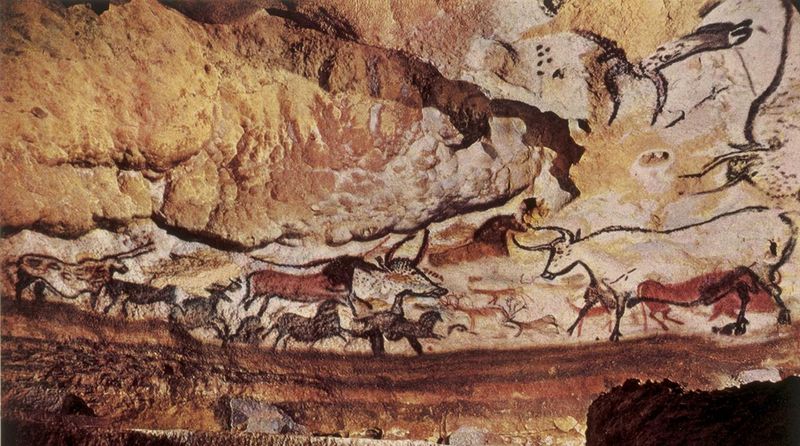
4. Fingal’s Cave -Staffa, Scotland
Located on the island of Staffa, a complete volcanic island is Fingal’s Cave. The calling card of this striking cave are the spectacular basalt columns. The entire cave is of different sized colonnades, nature’s gift to us. Even the cliffs of Staffa carry the basalt columns as walls around the edges. The series are equally spaced into prismatic columns and result in an extraordinary pattern. The columns have three to eight sides, with six being the most common. The cavern has a large arched entrance over the sea, but boats cannot enter here. There is a walkway overland that is led by a row of fractured columns into the cave allowing you to walk deep inside the 227-foot cavern. It is an odd scene to take in, with every column absolutely chiseled and exact; you would want to explore the reasons behind this strange perfection. Fingal’s Cave makes an impact immediately on the wandering explorers visiting this unique place. It is a solemn reminder of all the unbelievable, unimaginable wonders that exists in our world. It is baffling, extraordinary and causes our spirit to stir. This is a far-reaching experience and for cave-lovers, it should be on the bucket list.

Advertisement
3. Cave of the Swallows -Aquismon, Mexico
Cave of the Swallows (Sotano’ de las Golodrinas) is one of the deepest freefall caves in the world. It is a sinkhole cave that gets wider as you get closer to the bottom. The bottom is comparable to three football fields deep or 1,214 feet to be exact. If you were to jump in, it would take you twelve seconds to hit the bottom. During rainy season several waterfalls take the plunge directly over the edge and into the cave. Certain temperatures and even dampness can cause the cave to actually form clouds in the upper part. This enormous pit is home to hundreds upon hundreds of birds (hence the name). The dance begins promptly at sunrise, with little grey spots circling way below. The spots get bigger and bigger until thousands of white-collared swifts rise up from the cave. In a primeval ritual, the spiraling birds can almost be hypnotic. Even a more elegant bird lives in the Cave of the Swallows, beautiful green parakeets also do their ritualistic dance. The first know effort to explore the sinkhole was done by Texas cave explorers in 1966. It wasn’t until 1969; they knew just how deep this cave actually was. Times have changed, and extreme sports activity, including spelunking, keeps enthusiasts rappelling their way into the mysterious land of birds.
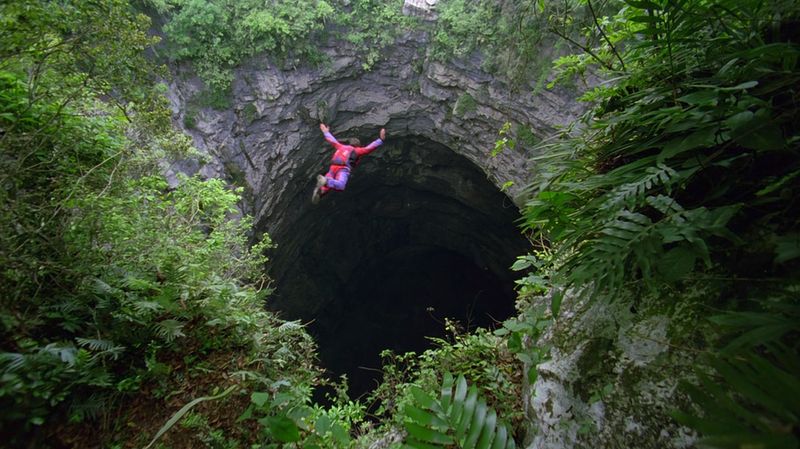
2. Glowworm Cave -Waitomo, New Zealand
This cave could be considered something right out of a fairy-tale scene; thousands of tiny glowworms illuminate the cavern like a starry night sky, except it is all a show done underground. Standing somewhere in the deep limestone shaft you will be left speechless. Glowworms are native to New Zealand and typically found in a variety of habitats especially caves. They use the bio-luminescence of their web silk and mucus to capture their prey. In Glowworm Cave, you can expect to see millions of glowworms, all about the size of a mosquito. Floating on a guided boat slowly and gently through this new land, gives you a new perspective on reality; there is magic still to be found. There is a true gem left to explore. This cave gives a whole new meaning to magic. Only 5 minutes from the Waitomo Glowworm Caves is Aranui Cave. It has a natural entrance and is the most delicate, tiniest cave of Waitomo’s three caves. Inside, you’ll find an alluring collections of flowstones, stalagmites, and decorative formations. Visit both caves for an easy 2 for 1 experience. These star bright little creatures offer an opportunity to find the magic of a fairy-tale in real life.
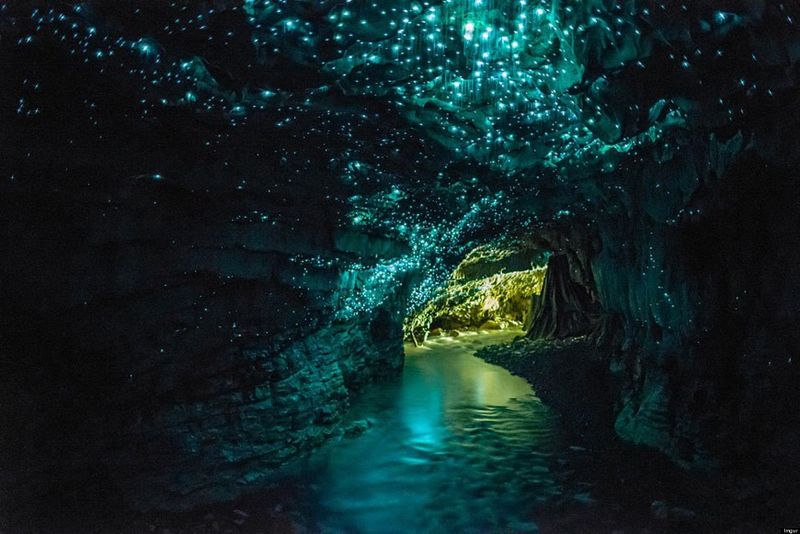
1. Cave of Crystals -Chihuahua, Mexico
Nothing quite compares to Cueva de los Cristales, or Cave of Crystals. In 2000, a pair of brothers discovered the limestone cavern almost 1,000 feet below ground in the Naica mine. Massive crystals were discovered, prompting scientists to wonder how they grew so big. It takes approximately 20 minutes to get to the cave entrance via a winding mine shaft where you descend into darkness and humidity. By the time you reach the entrance, no doubt you’ll be glistening with sweat. Then you see them…enormous pillars of light, some several feet thick. In fact, there is every shape of crystal possible, and a mystical experience begins. Imagine a crystal so big you could sit your whole family on it; or a few dozen tiny slivers of crystals being born out of a main one, resembling a hair brush. This is essentially the Cave of Crystals. This cave requires special equipment for exploration, as the magma can make the environment a dangerous one for those exposed for more than 10 minutes. It’s a worthwhile trip however as the crystals are said to be more than 500,000 years old. This cave is the number one cave to see because of the absolute grandeur of life happening within.
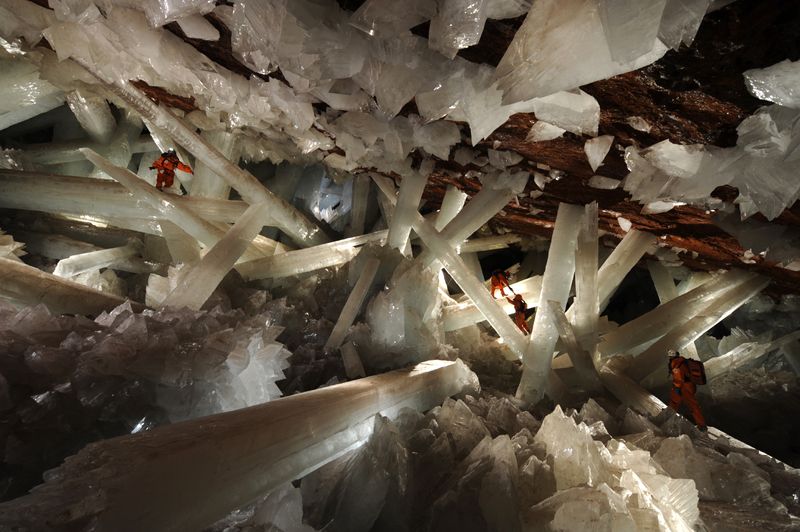
Advertisement